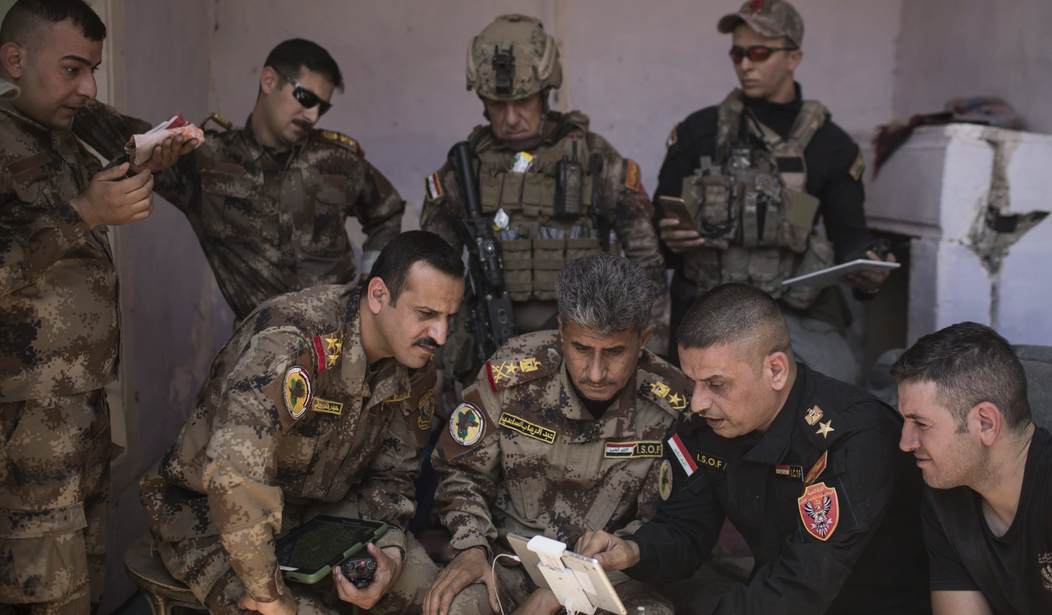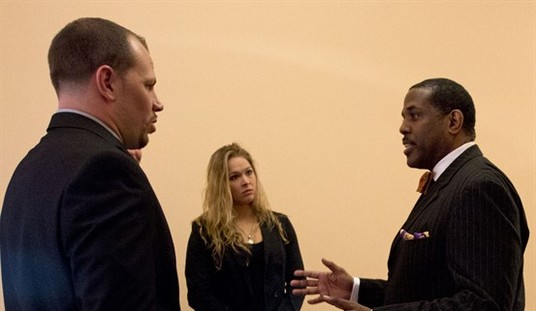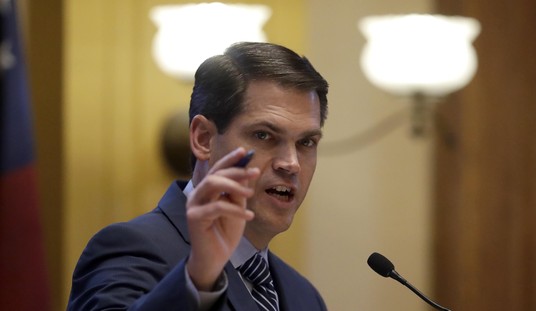ARLINGTON, Va. — Iraqi Prime Minister Haider al-Abadi declared the caliphate to be dead today after Iraqi forces, lauded by the U.S. military for their “grit” and “determination,” captured the area of old Mosul where the mosque central to the Islamic State once stood.
The Great Mosque of al-Nuri, with its distinctive leaning minaret called the Hadba, dated back to the 12th Century. On June 10, 2014, ISIS seized Mosul. On July 4, 2014, ISIS leader Abu Bakr al-Baghdadi broke into Friday prayers at the mosque to deliver his announcement of the new caliphate. Last week, ISIS blew it up as Iraqi forces neared.
“We will continue to fight Daesh until every last one of them is killed or brought to justice,” al-Abadi tweeted. “We are seeing the end of the fake Daesh state, the liberation of Mosul proves that. We will not relent, our brave forces will bring victory.”
Col. Ryan Dillon, spokesman for Operation Inherent Resolve, told reporters via video from Baghdad today that Iraqi forces “continued their advance on the remaining two ISIS holdouts: the old city and the al-Jumhuri Hospital complex.”
“The al-Jumhuri Hospital, north of the old city, sits on high ground and has been the 11-story killing tower for the terrorist group. And they’ve used this tower to murder hundreds of civilians, women and children who have attempted to flee the city,” he said. “The old city still remains a difficult, dense, suffocating fight. Tight alleyways with boobytraps, civilians, and ISIS fighters around every corner make the ISF’s advance extremely challenging.”
The Mosul offensive began in October. East Mosul, the larger part of the city east of the Tigris river, was liberated in January. The smaller, denser part of the city west of the Tigris was expected to be a more difficult battle.
Girls celebrating Eid in Mosul. Thanks to those who fought for their freedom, they can wear tiaras & pink dresses instead of black Niqab. pic.twitter.com/71H2mkiadU
— Ihsan (@Thawra_city) June 28, 2017
The Iraqi government will decide which of the remaining ISIS pockets in Iraq to target next, including Tal Afar and Al-Hawija.
But as their territory shrinks, morale has been withering.
“We have reflections of serious internal conflicts within ISIS’ ranks. Leaders have abandoned fighters to die, local fighters are being left to rot where they fall, while foreign fighters receive proper burials. And remaining inexperienced fighters are making rookie mistakes, blowing themselves and fellow fighters up accidentally in preparation for combat,” Dillon said. “ISIS cannot stop the progress that Iraqis and Syrians have mounted in the last two years. ISIS realizes this.”
#Iraq Federal Police Units freed 30 civilians including 20 kids among the 5 #Yazidi in #Mosul old city, they were held hostages by #ISIS. pic.twitter.com/L5SCJQIEKH
— Iraqi Day (@iraqi_day) June 29, 2017
To this point, 191,000 people have been able to return home in East Mosul. Dillon said “a few hundred” ISIS holdouts are estimated to remain in West Mosul.
In the third week of the final stage of the Wrath of Euphrates operation to oust ISIS from their declared capital of Raqqa, the Syrian Democratic Forces have seized about 7.5 square miles this week.
The coalition consisting of Kurds, Arabs, Christians, and ethnic minorities such as Turkmen and Circassians began the massive offensive in November.
Kurdish YPJ Sniper almost hit by ISIS Sniper inside Raqqa. She just laughs it off. pic.twitter.com/G49lJAlpwR
— Lalo Dagach (@LaloDagach) June 27, 2017
Special Presidential Envoy for the Global Coalition to Defeat ISIS Brett McGurk visited Syria on Wednesday and today, where the State Department said he “witnessed first-hand the humanitarian and stabilization assistance that is underway in liberated areas north of Raqqa, and held intensive discussions with local leaders and councils on post-liberation governance issues.”
McGurk also visited Al-Tabqa, the city west of Raqqa liberated on May 10, and its crucial dam on the Euphrates. The envoy “met with local leaders coordinating assistance that has begun to flow, such as food deliveries, hygiene kits, relief items, and chlorine to provide safe drinking water,” and “credited the courage of those who have worked to clear land mines and IEDs left behind by ISIS.”
Dillon said ISIS fighters, “abandoned by their leadership, are being pressured by the SDF from multiple axes” around Raqqa.
In addition to encircling Raqqa from the north, east and west, “the SDF now control all high-speed avenues of approach into Raqqa from the south,” the colonel said.
Happened now: #SDF & #MFS fighters captured ISIS terrorist in the west side of Raqqa. #WrathOfEuphrates @CENTCOM pic.twitter.com/121Ss92RCW
— SyriacMilitaryMFS (@SyriacMFS) June 27, 2017








Join the conversation as a VIP Member